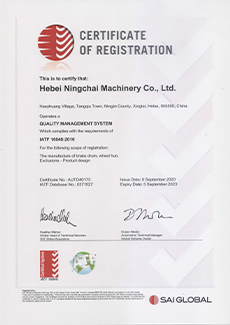
-
 Afrikaans
Afrikaans -
 Albanian
Albanian -
 Amharic
Amharic -
 Arabic
Arabic -
 Armenian
Armenian -
 Azerbaijani
Azerbaijani -
 Basque
Basque -
 Belarusian
Belarusian -
 Bengali
Bengali -
 Bosnian
Bosnian -
 Bulgarian
Bulgarian -
 Catalan
Catalan -
 Cebuano
Cebuano -
 Corsican
Corsican -
 Croatian
Croatian -
 Czech
Czech -
 Danish
Danish -
 Dutch
Dutch -
 English
English -
 Esperanto
Esperanto -
 Estonian
Estonian -
 Finnish
Finnish -
 French
French -
 Frisian
Frisian -
 Galician
Galician -
 Georgian
Georgian -
 German
German -
 Greek
Greek -
 Gujarati
Gujarati -
 Haitian Creole
Haitian Creole -
 hausa
hausa -
 hawaiian
hawaiian -
 Hebrew
Hebrew -
 Hindi
Hindi -
 Miao
Miao -
 Hungarian
Hungarian -
 Icelandic
Icelandic -
 igbo
igbo -
 Indonesian
Indonesian -
 irish
irish -
 Italian
Italian -
 Japanese
Japanese -
 Javanese
Javanese -
 Kannada
Kannada -
 kazakh
kazakh -
 Khmer
Khmer -
 Rwandese
Rwandese -
 Korean
Korean -
 Kurdish
Kurdish -
 Kyrgyz
Kyrgyz -
 Lao
Lao -
 Latin
Latin -
 Latvian
Latvian -
 Lithuanian
Lithuanian -
 Luxembourgish
Luxembourgish -
 Macedonian
Macedonian -
 Malgashi
Malgashi -
 Malay
Malay -
 Malayalam
Malayalam -
 Maltese
Maltese -
 Maori
Maori -
 Marathi
Marathi -
 Mongolian
Mongolian -
 Myanmar
Myanmar -
 Nepali
Nepali -
 Norwegian
Norwegian -
 Norwegian
Norwegian -
 Occitan
Occitan -
 Pashto
Pashto -
 Persian
Persian -
 Polish
Polish -
 Portuguese
Portuguese -
 Punjabi
Punjabi -
 Romanian
Romanian -
 Russian
Russian -
 Samoan
Samoan -
 Scottish Gaelic
Scottish Gaelic -
 Serbian
Serbian -
 Sesotho
Sesotho -
 Shona
Shona -
 Sindhi
Sindhi -
 Sinhala
Sinhala -
 Slovak
Slovak -
 Slovenian
Slovenian -
 Somali
Somali -
 Spanish
Spanish -
 Sundanese
Sundanese -
 Swahili
Swahili -
 Swedish
Swedish -
 Tagalog
Tagalog -
 Tajik
Tajik -
 Tamil
Tamil -
 Tatar
Tatar -
 Telugu
Telugu -
 Thai
Thai -
 Turkish
Turkish -
 Turkmen
Turkmen -
 Ukrainian
Ukrainian -
 Urdu
Urdu -
 Uighur
Uighur -
 Uzbek
Uzbek -
 Vietnamese
Vietnamese -
 Welsh
Welsh -
 Bantu
Bantu -
 Yiddish
Yiddish -
 Yoruba
Yoruba -
 Zulu
Zulu
Guide to Diagnosing Common Issues with Drum Brake Systems
Troubleshooting Drum Brakes A Comprehensive Guide
Drum brakes are a vital component of many vehicles, known for their effectiveness in providing reliable stopping power. However, like any mechanical system, they can experience issues over time. Understanding how to troubleshoot common problems with drum brakes will not only enhance your vehicle's performance but also ensure your safety on the road. This guide will cover the most frequent drum brake issues, along with their probable causes and solutions.
Common Symptoms of Drum Brake Problems
1. Squealing or Grinding Noises One of the most noticeable symptoms of drum brake issues is the presence of unusual sounds when braking. A squealing noise can indicate that the brake shoes are worn down and need replacement, while a grinding sound suggests that the shoes have worn out completely, causing metal-to-metal contact.
2. Vibrations or Pulsations When you notice vibrations through the brake pedal while braking, it might indicate that the drum is warped or out of round. This can happen due to excessive heat or improper adjustment.
3. Poor Brake Performance If your vehicle takes longer to stop than it used to or if you feel a lack of responsiveness when pressing the brake pedal, there may be an issue with the brake adjustment or the brake shoes may be too worn down.
4. Drum Overheating Overheating can lead to brake fade, where the brakes lose effectiveness at high temperatures. This situation can occur due to frequent or heavy braking, inadequate cooling, or issues with the brake hydraulic system.
Troubleshooting Steps
1. Visual Inspection Start with a thorough visual inspection of the drum brake assembly. Look for any signs of wear on the brake shoes, drum, and other components. Check for oil or grease contamination, which can cause the shoes to slip.
drum brake troubleshooting

2. Check Brake Adjustment Drum brakes need to be adjusted to ensure proper contact between the shoe and drum. If the shoes are not snug against the drum, the braking performance will decrease. Adjust them according to the manufacturer’s specifications.
3. Examine the Brake Hardware Inspect the springs, clips, and adjusters. Worn or broken hardware can affect the proper functioning of the brake shoes. Replace any damaged components to restore effective operation.
4. Measure Drum Condition Use a micrometer to measure the inner diameter of the drum to check for wear. If it exceeds the manufacturer’s specified limits, the drum needs to be resurfaced or replaced.
5. Brake Shoe Replacement If the brake shoes are worn down, they must be replaced. Ensure that you use shoes that are compatible with your vehicle’s specifications.
6. Hydraulic System Check Since drum brakes rely on hydraulic pressure, check the brake fluid levels and inspect for leaks in the hydraulic system. Low fluid levels or leaks can lead to a loss of braking force.
7. Professional Help If you are unsure about any step in the troubleshooting process or if the problem persists after your checks, it’s advisable to consult a professional mechanic. They possess the expertise and tools necessary to diagnose and correct more complex issues.
Conclusion
Drum brakes play a crucial role in vehicle safety and performance. Regular maintenance and prompt troubleshooting of any issues will ensure your brakes function effectively. By understanding the common problems associated with drum brakes and following a systematic approach to troubleshooting, you can keep your vehicle safe and responsive on the road. Remember, safety should always come first, so don’t hesitate to seek professional assistance when needed.
-
What Are Drum BrakesNewsJul.07,2025
-
Understanding Brake Drum MaterialNewsJul.07,2025
-
Semi-Trailer Brake Drum: A Key Component for Extreme Loads and Long-Distance TransportNewsJul.07,2025
-
Drum Brake Pads for SaleNewsJul.07,2025
-
Brake Drums for SaleNewsJul.07,2025
-
Brake Drum ManufacturerNewsJul.07,2025
-
Aluminum Brake Drums: The Future of High-Performance CarsNewsJul.07,2025
